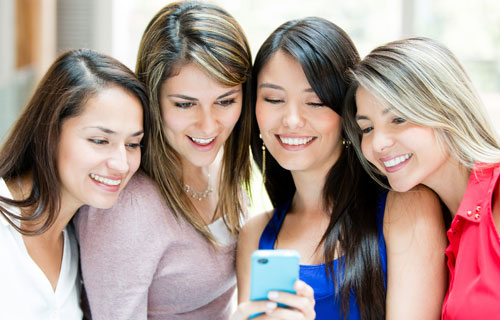
Recently I was considering a visit to Discovery Cove, a local aquatic theme park where visitors can swim with dolphins. Between work and working out, I visited their website on my iPhone, hoping to get the details and buy tickets. Instead of a mobile optimized experience, I was presented with a teeny tiny version of the website and soon I was on to other things.
Like other millennials, I’m busy and on the move. Between school and my full-time job, I try to stay in shape and have something that resembles a social life. When I am sitting at a computer, it’s likely for school or work. Almost 100 percent of my leisure searching takes place on a mobile device while I’m at lunch or on the go.
Like other people in my generation (that is, people born after 1980) my attention is split in a million different directions. Novelty and efficiency are the two things that captivate me enough to slow down, take a second look and follow through.
Augmented Reality marketing
Augmented Reality marketing is the perfect strategy for reaching millennials. Augmented Reality invites users to participate, to be a part of the experience rather than passive recipients of a message. Millennials expect to be tempted by novelty and immersed in the experience of a brand.
If you want us to stick with you long enough to buy something, to enjoy what’s best about your products or to create memorable experiences and moments that we can share, your old-school website won’t do the trick. We need instant methods for transacting and creating content. What millennials need, Augmented Reality marketing delivers.
Augmented Reality marketing campaigns for millennials
If you’re a marketer and you’re not thinking about millennials, you’d better start. There are 76 million millennials in the United States and they’re coming of age. They’ve got expendable income and 59% of them are using smartphones. Here are three ways that Augmented Reality marketing is being used to connect with this audience.
Engage. Maybelline created the ColorShow app to help millennials experiment with nail polish colors. A cross between a game and shopping, the app helps customers to get creative before they buy. This app puts Maybelline square in the middle of the creativity and personal style of their millennial audience. What more could a cosmetic company ask for?
Interact. Oreo tested Augmented Reality marketing campaigns with a Snaps campaign that allowed users to capture brand ambassador photos of themselves with illustrations of the famous cookie, but their Catch the Oreo Augmented Reality game takes brand interaction to a whole new level. Catch flying Oreos with a glass of milk, avoid sneaky spiders and use movement to generate special effects.
Entertain. The BAND-AID® MagicVision™ experience uses Augmented Reality to transform hurt into happiness – and to sell more BAND-AID brand bandages to millennial parents. There is nothing that makes kids happier than finding ways to use their parents’ mobile devices to interact with the world and there’s nothing that makes a parent happier than a fun and brillant way to calm a distressed child.
What’s next for Augmented Reality marketing?
The future of Augmented Reality marketing is social. The ease of capturing and sharing AR experiences on social media platforms is the true beauty of the technology. As far as millennials are concerned, if you can’t share a photo of an experience on a social media platform, it may as well not have happened.
With so many forms of media battling for consumer attention, one can only be sure to lock in a millennial by immersing them entirely in an experience, the optimal immersion tool: Augmented Reality marketing. Augmented Reality marketing has arrived just in time to connect brands to the hyper-connected generation.












